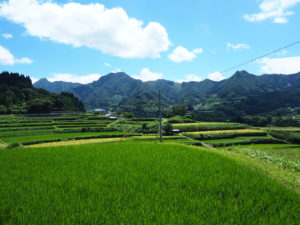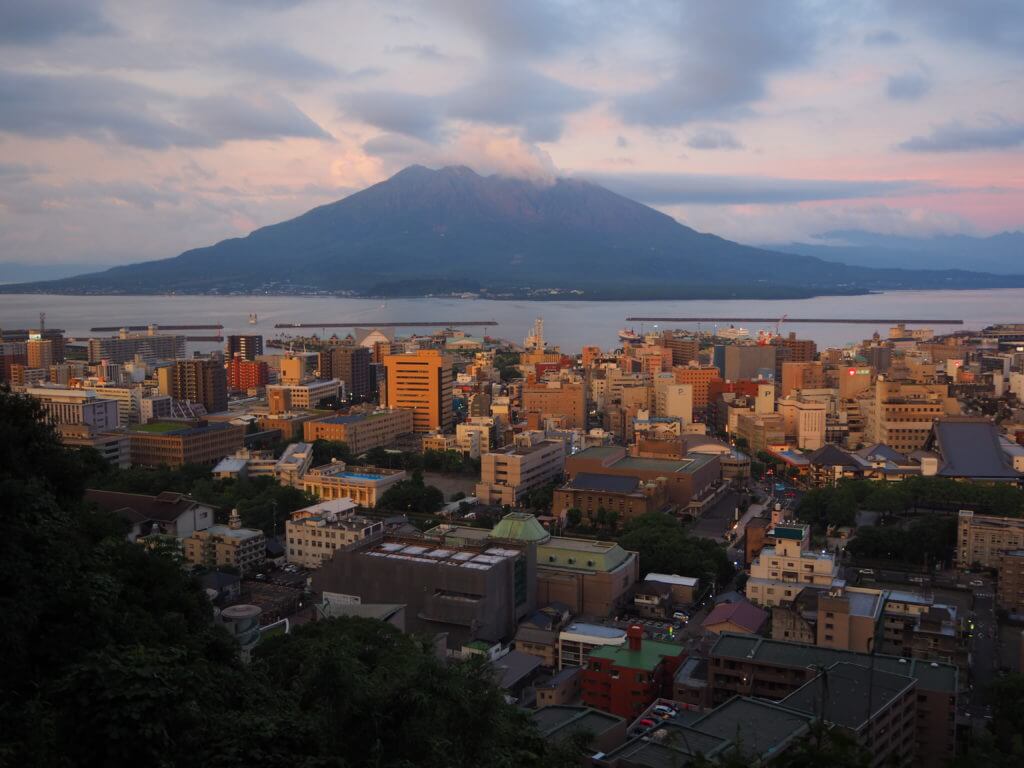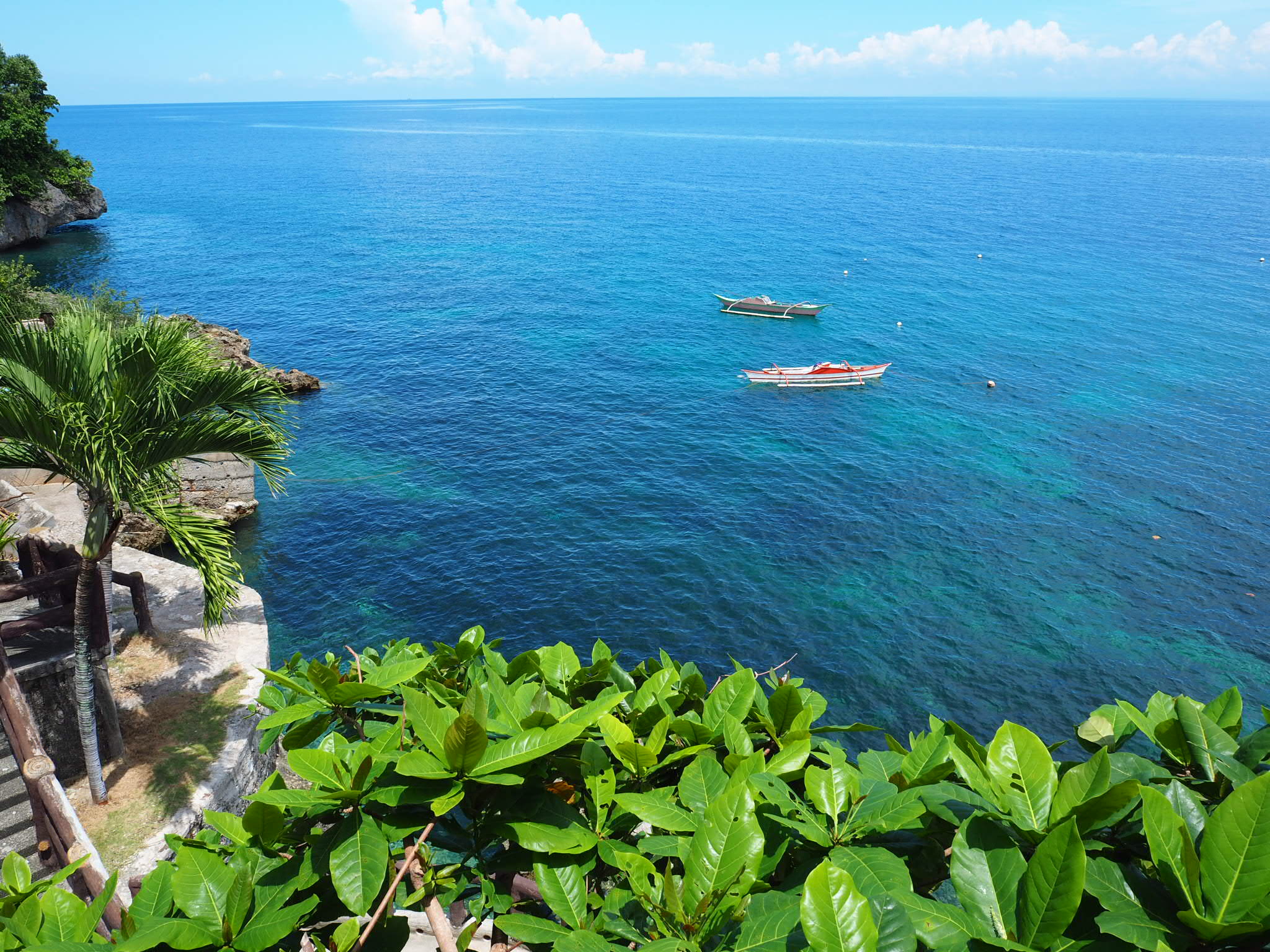Renting a car in Japan – Kyushu edition
We are huge fans of Japan. After spending a month there in October 2017 we returned again in July 2018, renting a car in Kyushu.

Back to Japan
Our first trip saw us dividing our time between Hokkaido and Japan’s most famous tourist trail winding from Hiroshima up to Tokyo. This time we headed to Kyushu and Shikoku before flying back to Beijing from Tokyo. No JR passes this time as we were renting a car in both Kyushu and Shikoku and using rail passes to explore some of the areas around Tokyo, including Nikko and Kamakura.
We have another post on renting a car in Japan that’s more focused on renting a car in Hokkaido, Japan’s most northerly island. Whilst there are definite similarities there are certainly some unique things to bear in mind when renting a car in Kyushu or Hokkaido. Hopefully, you find one or both of them useful for planning your upcoming trip!
Why Kyushu
Japan’s 3rd largest island does not receive the same kind of attention as many of Japan’s more preeminent locations. This is a blessing in disguise. Tourist numbers here are far lower than in some of Japan’s big hitters like Kyoto or Hiroshima and there are plenty of places around the island where it’s easy to escape people in general. Throw in fantastic food, spectacular scenery, and onsens galore and it’s easy to see why Kyushu is so popular with those who have been lucky enough to visit. If you want some tips on travelling to Kyushu then check out our 2-week Kyushu itinerary.
Getting There and Away
Most travellers will enter through Fukuoka since this airport handles the majority of Kyushu’s international and domestic flights. The airport is really close to the city centre meaning it’s possible to have a day or two in Fukuoka before picking up your car or after dropping it off, something we took full advantage of.
Sadly Fukuoka is not particularly well connected internationally with the exception of Taiwan and South Korea. With this in mind, it may be worth using JAL or ANA’s cheap internal flight deal for tourists to get to Fukuoka or elsewhere in Kyushu. You can find out more about that in our post on budgeting in Japan.
Do You Need to Rent a Car?
There are arguments for and against here. Cities like Fukuoka, Nagasaki, Kumamoto, Beppu, and Kagoshima are reasonably well connected by public transport. However, anything outside of this by public transport is irregular at best and nonexistent at worst. In some cases, there may only be 2 or 3 buses per day to your chosen location.
The benefit of renting a car is obviously being able to get everywhere that you can’t with public transport, which in Kyushu is a huge number of places. We rented a car for 13 days, picking up and dropping our little beauty off in Kyushu’s biggest city; Fukuoka. Plenty of others will travel down to say, Kagoshima by public transport and then pick up a car and drop it off back in Fukuoka or Nagasaki before flying home or elsewhere.
Renting a car in Kyushu is by far the best way to explore this fascinatingly diverse part of Japan.
Documentation
Your driving license is NOT enough to drive in Japan. When renting a car in Kyushu, and everywhere else in Japan, you need to have an international driver’s permit (IDP). Most countries require the 1948 Geneva Convention IDP. We cannot stress this enough; if you do not have this document you will not be able to take your hire car and you will not be given a refund.
All of the rental firms we’ve used in Japan clearly state that the driver must have an IDP. Don’t be one of the drivers who forgets. They are generally quite easy to obtain from various automobile associations in your own country.
What is it like to drive in Japan?
Driving in Japan is no different from driving in any Western country. The vast majority of road signs are in Japanese and English. Additionally, a lot of traffic signs are similar to what is seen in other countries. Drivers in Japan are generally very courteous. They are not as aggressive as drivers in Australia, New Zealand or the UK. The vast majority of drivers will follow the road rules to the letter, the complete opposite of the vast majority of other Asian nations. Japan is also one of the few nations outside of the former British Empire that drives on the left.
Driving in Kyushu
When driving in Kyushu it is important to be aware that roads in the cities and small countryside towns can be extremely narrow, and as a result, require extra care and attention when driving. This is particularly true when navigating the maze of narrow alleyways that make up Nagasaki.
Driving in Kyushu will involve having to navigate the rather complex toll road system. Below we have a separate section explaining the Kyushu Expressway Pass (KEP), however, it’s important to note that the pass does not cover every single toll road on Kyushu. There is a detailed map provided when you pick up your car and KEP that shows which toll roads are covered.
However, it is worth consulting your map regularly. Just to be sure your route doesn’t divert you onto a toll road somewhere down the line. You can set Google to avoid toll roads but we found this avoided all the toll roads, including the ones we could use. All of the cars we rented in Japan came with a sat nav that could be set up to avoid roads not covered by the regional expressway passes. Remember to get that set up before you leave the shop as usually the interface is in Japanese.
Who to Rent From
We rented with ToCoo a Japanese-based car rental search engine that compares a huge number of rental outlets. There is a myriad of different combinations, add-ons, and deals, a common occurrence in Japan. When we rented a car in Hokkaido we opted against renting with Tocoo due price, a complicated website interface and not being able to pick up a Hokkaido expressway pass along with the rental car (it had to be mailed to your hotel). However, when renting a car in Kyushu we found Tocoo offered us the cheapest prices and was the most efficient KEP pass provider we could find. In addition, their website had obviously received an update as it was (and still is) much more user-friendly than before!
Extras and Campaigns
On the homepage, you can select what “campaigns” or “promotions” you want to be included in your search. This effectively means whatever bolt-ons you want to add. Some can be added both at the initial search stage and afterwards. However, some are special deals that can only be added at the initial search and cannot be added after the vehicle is selected. If you change your mind it does seem like most things can be added at the dealership. However, there is a good chance that it will be significantly more expensive. This means you may have to play around a little bit with certain combinations of add-ons at the initial and final stages to find the best price. It is this that makes the user interface a little confusing.
Out of all of the car hire options Budget was comfortably the cheapest. Part of this was due to the fact we were able to add compensation coverage (zero excess insurance) as a “campaign” before searching. Adding this extra on after the search was more expensive. However, renting directly through Budget would have more than twice the price due to complex financial laws in Japan.
rentalcars.com also has a presence in Japan however during our searches they were significantly more expensive than ToCoo. However, in different seasons this may naturally change. In addition, there was no way to order a KEP pass as part of the deal through rentalcars.com.
When selecting which car you want pay attention to the red writing on the first line. This will include some additional extras and options. If you want a Kyushu expressway pass (KEP) you will need to select a car that offers the KEP as part of the package.
Zero Excess
An absolute no-brainer when renting a car. If renting through ToCoo you have 2 options, the first is to purchase your insurance through ToCoo, the second is to purchase it through the dealership itself. In our experience, it was much cheaper to purchase it through ToCoo itself. Rather confusingly it is referred to as “compensation immunity” or “compensation coverage” on their website. However, selecting this will cover you completely.
At the dealership where you pick your car up, they will offer you their own insurance as well. It is up to you if you take it. You will be covered by ToCoo if you select this option during the initial booking. The main difference is that you will have to pay and then claim the money back from ToCoo afterwards. Direct billing is not an option with ToCoo’s own insurance. We confirmed this with ToCoo before arriving in Japan, their response time was extremely quick. They confirmed that we would be offered insurance at the dealership, however, it was not necessary as we were already covered by their insurance.
Kyushu Expressway Pass
This may be the most important thing you will need for a road trip in Kyushu after the car itself. The lifesaving Kyushu Expressway Pass (KEP) is issued by most major rental firms. You do need to select if you want it when you book online. They will then have everything ready for you to sign and pay for when you pick up your car. Do be aware that if you select the option of having a KEP you will need to have it for the entire rental car period.
Is a KEP Worth the Money?
The maximum KEP pass length is 10 days. Since we had our car for 13 days we paid for 10 days and 3 days at a total of 16,000 yen. It seems like a lot, but toll roads in Japan are expensive. It costs close to 3000 yen in tolls from Fukuoka to Nagasaki and 5000 from Nagasaki to Kumamoto. We would have comfortably spent more on tolls than 16,000 yen had we not had a KEP. Additionally, we saved a lot of time. When renting a car in Kyushu the KEP pass is absolutely worth the money.
The KEP pass covers toll roads that circumnavigate the island. However, it does not cover every toll road on the island. If you use a toll road that is not covered you will need to make up the difference on the ETC card when you return the car.
The total cost of the car does not include the KEP. The cost of the KEP is in addition to the rental car fee. You will pay at the dealership when you pick up the car.
How to Use a KEP
The KEP program is loaded onto a credit card-sized device called an ETC card. This is then put into a card reader located in the glove box or under the steering wheel. Next to the rearview mirror, there is a small box, with a green light when the ETC card is inserted.
To use an ETC card simply enter and exit the toll road down the blue ETC lane. It’s important to note that you will be able to enter and exit any toll road, not just the ones covered by the KEP. When you return the rental car you will need to pay for the use of any roads that are not covered by the KEP.
Obviously, you don’t have to buy the pass and just drive on regular roads avoiding the toll roads. However, do be aware this will make your journeys significantly longer. Do not be fooled by Kyushu’s small size. Its mountainous centre and winding coastline mean journeys often take much longer than you’d expect.
Weather
Kyushu bears the brunt of a lot of typhoons that hit Japan during the summer months. We were in Kyushu for the first two weeks of July. Whilst we had plenty of sunny days we also managed to get caught up in one or two huge typhoons. Whilst not particularly pleasant to drive in, Japan is extremely well prepared for this kind of weather. We were receiving updated weather warnings on our phones for the duration of the typhoons from the Japanese Government.
During our time in Kyushu, we changed our plans to avoid mountainous areas that had received landslide warnings. Aside from this, we did not experience any road closures or traffic issues as a result of the weather. However, there were substantial parts of Kyushu, Shikoku and Southern Honshu that were severely affected by the weather. This was due to the heaviest rainfall in over 50 years. So whilst visiting in the summer months is likely to result in some heavy rain, the summer of 2018 seems to be a unique yet tragic occurrence.
Throughout the year Kyushu is one of the wetter parts of Japan, so do be prepared for sudden downpours on the highways. At times the rain can be very heavy which severely limits your visibility. Slow down and go at a speed you feel comfortable with.
Parking
A nightmare in cities like Fukuoka, Nagasaki, Kagoshima, and Kumamoto but generally fine elsewhere. We always made sure our accommodation had parking. So we never had to worry about finding parking in the city itself. In Kumamoto and Kagoshima, our hotels had car parks that cost 1000 yen per 24 hours, which is about 6.50 GBP. Away from the cities, you will have no issues finding parking. Although some tourist sites like Takachiho Gorge may charge for parking in some areas.
Some restaurants and onsens which are located next to paid parking lots may sometimes be able to give free parking to their customers. There usually won’t be signs, so just park by the side of the road and nip in to ask.
Outside of the big cities most hotels and guesthouses will have parking attached for free. If not there is usually street parking close to the premises.
What are map codes?
Map codes are 4-6 digit numbers which when entered into your sat nav will take you to that exact destination. Usually, this is for popular tourist sites and famous places. However, car rental shops and the closes petrol stations also have map codes. In addition, some big hotels may have them, but it wasn’t something that we encountered.
Do You Need to be Able to Speak or Read Japanese?
No, you don’t. Road signs for destinations and sights are written in both English and Japanese. Stop signs and give-way signs are written in Japanese only. Rental car companies provide a helpful pamphlet that includes information on all of the signs that are written in only Japanese. Our car’s satellite navigation would also tell us in English that a stop sign was coming up. The system itself was in English for entering destinations and map codes, however, outside of this, it was in Japanese. There is an option to select different routes so as to avoid toll roads entirely or to just avoid ones that are not covered by the KEP. You can ask the car rental branch to show you how to do this.
Filling Up
Most petrol stations are serviced, although there are a few in the countryside that is not. Surprisingly petrol is cheaper than in most western countries. When you pull up at a serviced petrol station the chances are the attendants will speak limited English. Regular, full and cash – The three key words in your conversation. They will ask which petrol, how much and how you are going to pay. Quick, easy and convenient.

